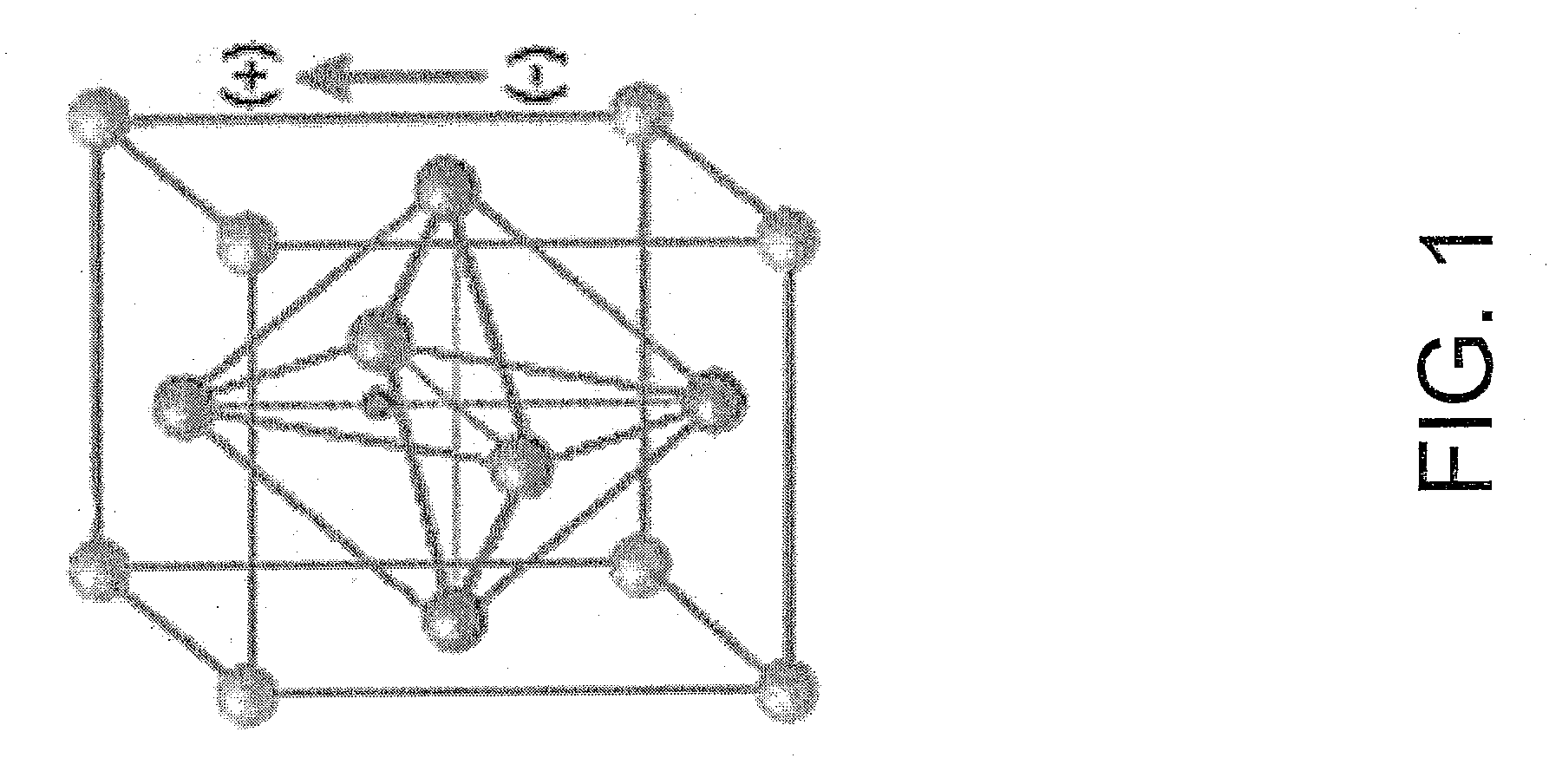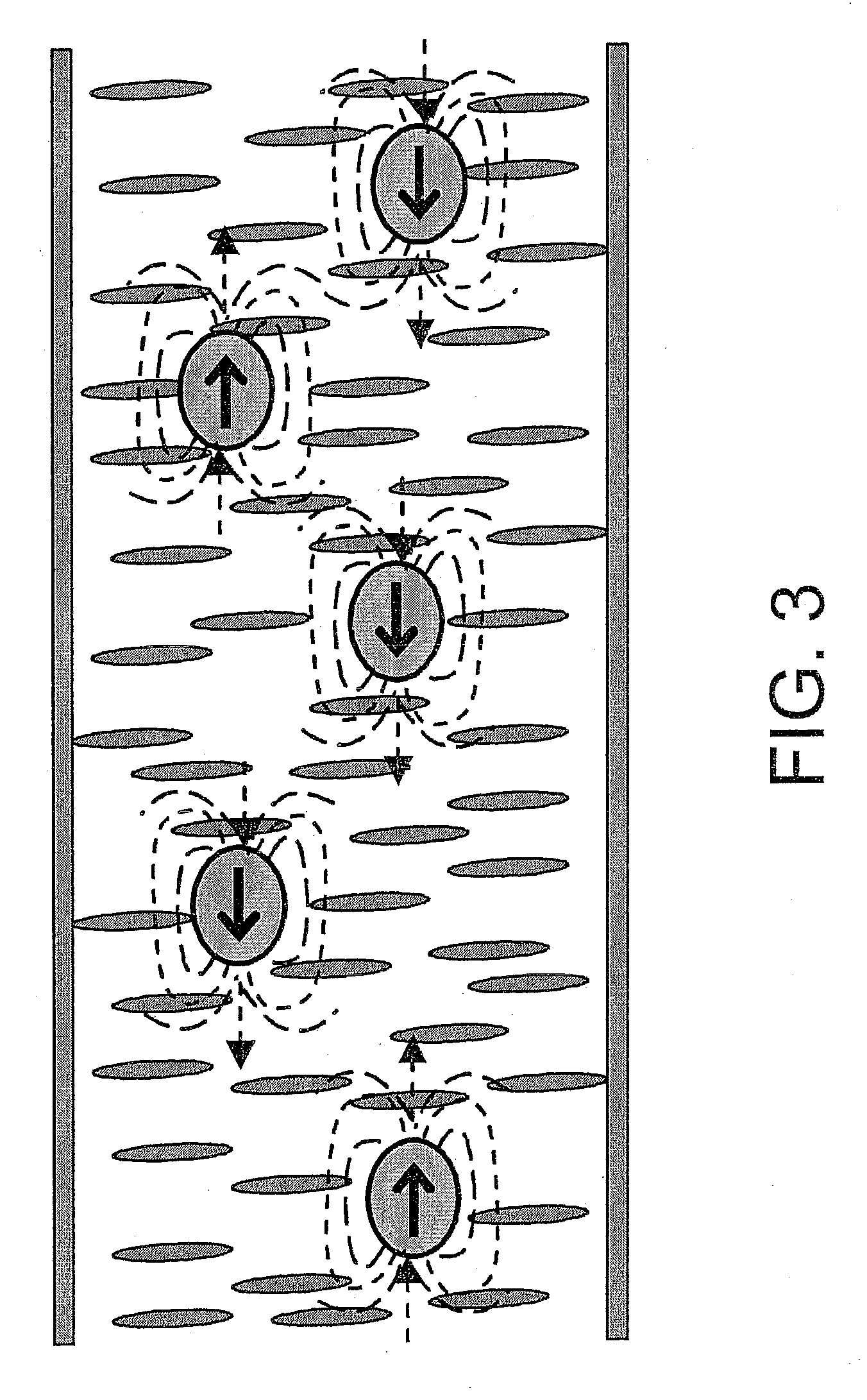Non-synthetic method for modifying properties of liquid crystals
a non-synthetic method and liquid crystal technology, applied in the direction of thin material processing, instruments, chemistry apparatus and processes, etc., can solve the problems of difficult to achieve the effect of traditional chemical synthetic methods, long research effort of many specialists, and significant financial investments
- Summary
- Abstract
- Description
- Claims
- Application Information
AI Technical Summary
Problems solved by technology
Method used
Image
Examples
example 1
Performance of a Ferroelectric Particle / Nematic Liquid Crystal Suspension in a TN Display Mode
[0080] We tested a suspension of Sn2P2S6 ferroelectric particles / 5CB liquid crystal in a standard twist liquid crystal cell. The liquid crystal twist cell consisted of two glass substrates and a LC suspension disposed between the substrates. The facing surfaces of the substrates were covered with an indium tin oxide (ITO) transparent electrode. The electrodes were covered with rubbed alignment layers consisting of NISSAN 7792 polyimide from Nissan. A droplet of the suspension was put on one of the substrates and the second substrate was placed onto the first substrate. The substrates were separated by rigid 20 μm spacers and were oriented such that the rubbing directions of the polyimide layers were perpendicular to each other. The twist cell then was sealed with epoxy glue.
[0081] The electro-optic characteristics of the twist cell were measured by standard methods in the art (see, for ex...
example 2
Performance of a Ferroelectric Particles / Nematic Liquid Crystal in a Planar ECB Display Mode
[0083] We obtained small ferro-electric Sn2P2S6 particles by milling larger particles (about 1 μm size). The larger ferro-electric particles were mixed with a solution of oleic acid (surfactant) in heptane in a weight ratio of 1:2:10 respectively, ultrasonically dispersed and ground in a vibration mill. The resulting ferro-electric particle suspension was mixed with the liquid crystal. The heptane was then evaporated and the mixture was ultrasonically dispersed for 5 min. The relative concentrations of components were adjusted to give a final suspension with about 0.3% by volume of ferro-particles.
[0084] Planar cells were filled with the liquid crystal suspension or pure liquid crystal at a temperature (T) greater than the clearing temperature (Tc). The clearing temperature is the temperature at or above which the liquid crystal material enters an isotropic liquid state and becomes transpar...
example 3
Stressed Liquid Crystals Based on a Ferro-Nematic
[0086] This example is related to the Stressed Liquid Crystal (SLC) materials. Stressed Liquid Crystals (SLCs) are new light modulating materials that decouple the thickness of the liquid crystal layer and the switching speed and providing large shifts of the phase retardation in very short times. The material consists of interconnected micro-domains of a liquid crystal dispersed in a stressed polymer structure. The stress deformation imposes unidirectional orientation of the liquid crystal. The new material is optically transparent and provides electrically controllable phase modulation of the incident light.
[0087] The performance of the SLCs is greatly enhanced by using a ferroelectric particles / nematic liquid crystal mixture rather than the pure liquid crystal for making the SLCs.
[0088] Large Sn2P2S6 particles (˜1 μm) were milled in a solution of oleic acid (surfactant) and heptane in a weight ratio of 1:2:10 respectively in a m...
PUM
| Property | Measurement | Unit |
|---|---|---|
| Curie temperature | aaaaa | aaaaa |
| size | aaaaa | aaaaa |
| transition temperature | aaaaa | aaaaa |
Abstract
Description
Claims
Application Information
 Login to View More
Login to View More - R&D
- Intellectual Property
- Life Sciences
- Materials
- Tech Scout
- Unparalleled Data Quality
- Higher Quality Content
- 60% Fewer Hallucinations
Browse by: Latest US Patents, China's latest patents, Technical Efficacy Thesaurus, Application Domain, Technology Topic, Popular Technical Reports.
© 2025 PatSnap. All rights reserved.Legal|Privacy policy|Modern Slavery Act Transparency Statement|Sitemap|About US| Contact US: help@patsnap.com



